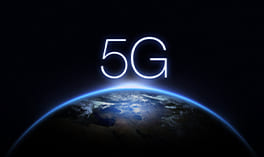
Yes, 5G is already here, with new standalone 5G networks being launched by global operators in early 2019. Furthermore, 5G phones are being sold by all major phone makers. And 5G may soon be available to many more individuals.
5G is now available in more than 61 countries. In comparison to 4G, 5G has considerably faster rollout and adoption. Consumers are interested in the high speeds and minimal latencies. 5G, on the other hand, goes above and beyond these benefits by allowing mission-critical apps, better mobile broadband, and massive IoT. While it is difficult to forecast when everyone will have access to 5G, the world has seen a lot of 5G launches in the first year, and more nations are expected to deploy 5G networks in 2021 and furthermore. In many places of the world, 5G is rapidly becoming a reality.
In May 2022, 492 operators in 142 countries/territories are presently investing in 5G testing, license acquisition, planning, implementation, and launches, according to the Global Mobile Suppliers Association (GSA). And out of those 213 operators in 85 countries and territories have commercialized 3GPP-compliant 5G services (mobile or fixed wireless access). There are 103 players engaged in standalone 5G networks for public networks, including those that are studying, experimenting, piloting, designing, or implementing 5G standalone networks, as well as those that have already launched 5G standalone networks. According to the GSA, 21 operators have developed or launched 5G standalone networks in public networks.
Many countries are seeing rapid adoption of 5G, as service providers continue to build infrastructure to support this new technology. To improve customer service delivery, 5G technology ensures higher-end performance in IoT innovations for smart motorways, autonomous vehicles, high bandwidth AR apps, IoT-enabled robotics, and sensors. This incredible invention has the potential to transform the hi-tech world, as well as many other industries. It has enormous potential to revolutionize retail, hospitals, manufacturing, and domestic transportation.
To improve the consumer experience, hotels and other public locations will soon be dominated by Wi-Fi and 5G networks. Swarms of drones that can interact with each other are one of the most interesting applications of 5G connection. Rescue operations, fire inspections, and traffic monitoring can all be carried out by such drones, and video reports can be collected quickly at a ground station. Today's globe needs 5G technology to see general progress in numerous industrial sectors, businesses, and academics. Fiber optic cable must be installed in and out of cities and outlying places for widespread usage of 5G technology, high density, and high performance. Beyond traditional telecom,
The majority of sector executives want to work with 5G service providers as digital transformation partners. 5G is now available in limited areas. Some cities have 5G networks, and a few businesses have built private 5G networks, but it is not yet the industry standard. As a result, the most commonly mentioned hurdle to 5G investment and implementation, is the "availability of 5G-enabled goods." In turn, buyers expressed uncertainty about which provider to employ, citing a lack of coverage as a stumbling issue. "Universally, 5G accessibility is quickly spreading, starting in the bigger urban communities where the majority of organizations and individuals are." 5G adoption is developing in densely populated areas and will spread from there. Looking ahead is essential to innovation. While 5G is not yet generally available, it will be shortly. Businesses who get ahead of the curve will reap the greatest benefits."
Despite this improvement, there is still a significant worldwide digital gap. Millions of people live in places where mobile broadband is not available, but there are also billions of people who have access to mobile broadband but do not use it. The Covid-19 pandemic has featured the significance of cell phone organizations, which are in some cases the main source of web access for some individuals, especially in provincial regions. Just like Sub-Saharan Africa is one region that falls behind the rest of the world. In Sub-Saharan Africa, the mobile Internet penetration rate was only 28%, compared to 46 percent for mobile phones. Part of the reason for this is that the region had the lowest percentage of 4G subscribers, at only 10%, compared to 43 percent for 3G and 29 percent for 2G.
This means that 72% of subscribers in this region are still unable to use 4G to access the internet. There is a Coverage Gap here. The expense of Internet-capable gadgets, such as cellphones, is one of the key issues limiting this expansion. New 5G networks (mainly in South Africa) will serve only 3% of users throughout the same time period. So, what does this signify for sub-Saharan African mobile networks? Clearly, 5G is not on many operators' radars, and they will continue to rely largely on older 2G and 3G networks.
Innovations wait for no one and the most sophisticated countries will get 5G within 2-3 years at the most. However, underdeveloped countries have yet to deploy 4G and may not be able to buy 5G equipment until much later. By that time, the more sophisticated industrialized countries will have gone on to 6G, while certain quickly expanding markets may have skipped 5G entirely and moved on to 6G. Because of the natural pattern of technology proliferation.